 |
| "Hi, Hex!" image by @datavortex |
So, y'know, I'm going to talk about 'em.
But since I'm a southern gentleman, we'll kick this off on an encouraging note. I know I've already gushed well past the point of propriety, but to hell with it. Here's more:
While the event has always been strongly linked to the nerdcore hip-hop movement, Nerdapalooza 2010 was all about the rock. From the stripped down guitar pop of returning act Marc with a C and the rock star swagger of local legends Sci-Fried to the more exotic flare of Seattle's Kirby Krackle and the undeniable genius of The Protomen, the guitarist-to-MC ratio was much more favorable than at 'Paloozas past. And to say that everyone rocked the fuck out at this year's show would be… well, fairly accurate. Even ZeaLouS1 got in on the action with his new rap/rock fusion group The Bossfights, a sonically staggering blend of hip-hop and thrash that only sounded sweeter with the added vocal prowess of Dr. Awkward.
This latest iteration boasted a more diverse lineup than ever before, and not just with regard to geek rockers. Chip music, dementia music (compliments of the always-inspired FuMP) and even Wizard Rock were well represented alongside the stellar grock and nerdcore of Nerdapalooza 2010. This variety, a hallmark of Hex's original vision, finally found fair footing, and with it came an undeniable sense of textural satisfaction, a genuine feeling that nerd music was represented across the full breadth of its beautiful spectrum. And woven into a quilt of sonic awesome.
But the bands themselves are only as impressive as their performances. Luckily, the most remarkable element of the entire weekend was the sets themselves. From fledgling nerdcore rapper MC Cool Whip at the pre-party and early-risers HDninja at the show proper, all the way to closing sets from the likes of the venerable MC Frontalot, the music was truly at the center of the Nerdapalooza experience. And many of the acts never sounded better, in spite of a number of notable obstacles.
The first logistical hurdle with which nearly every Nerdapalooza artist was forced to contend was the event's unfortunate scheduling delays. When I tell you that day one was, at one time, over 3 hours behind schedule, do not mistake that statement for my trademark embellishment. Still, in what could have been a really bad scene, the Nerdapalooza crew, the legions of fans and the artists themselves pressed on in a showing of genuine nerdy brotherhood.
Unfortunately, things were further hampered by sound issues of the highest order. Faulty mics, tinny backing tracks and flaky monitors were just a few of the problems that sought to sour otherwise phenomenal performances. The sound man is truly the punching bag of rock 'n' roll, and longtime musical allies like The HT and Marc with a C were forced to bear the weight of knowing stares as they attempting to coax the master mixing board back from the brink on numerous occasions.
Possibly the only thing more disturbing than the sound problems themselves were the mixed reactions they elicited from attendees. First-timers were shocked and a little perturbed, but returning fans often seemed to pass both this and the scheduling delays off as unfortunate but expected elements of the overall Nerdapalooza experience. That is a genuinely unfortunate association for such an esteemed event.
Still, my take is slightly different; I see these issues as (admittedly lingering) growing pains. As the event continually matures in size and scope, there are certainly apt to be unfortunate side effects. Nerdapalooza as we know it has undergone such growth that much of the spontaneous, informal nature evident in the early years has dissipated, but well before opportunities for flawless, patently professional execution have become readily available. It is as if you and your Tuesday night poker buddies suddenly found yourselves managing a Vegas casino. You have the heart and potentially the know-how, but the resources and true tricks of the trade only await at the end of a long chain of hard-fought battles of trial and error.
Please don't misinterpret the above statement as allegations of the dread sellout syndrome. The sense of community is still alive and well at 'Palooza, but a measure of that intimacy has been necessarily bartered for a somewhat broader appeal. And while Nerdapalooza 2010 may have presented more new faces than old friends, it still managed to be the geeky lovefest it has always promised.
And to return from my recent sojourn into ham-fisted metaphor and imaginary compound words, let me simply restate that Nerdapalooza has grown. And it should continue to do so. But it is impossible to grow without changing.* This was evident even in the most pedestrian elements of Nerdapalooza 2010: the venue layout itself.
The Orlando Airport Marriott convention center was perfectly sized for this year's crowd, but its setup was telling of the transformation inherent in the event. Easy access to restrooms, smoking areas and chill space were welcome additions, but they smacked of the old-style convention.
You see, bands play at a convention, but it is not their scene. It is noisy and oppressive with its poor sound and droves of passersby, and this year's Nerdapalooza had a distinctly con-style layout. With 2 stages situated on opposite sides of a large room bisected by a healthy merch area, it was a fan's dream come true. You could easily wander around unfettered by concerns of when, who or where and simply drink in the experience. Unfortunately, it was significantly harder on the performers. The one-room setup and back-to-back performances left little opportunity for sound checks and, worst of all, it encouraged listeners to abandon a set early so as to snag prime floor space for the following act. This unwittingly played against the unifying element of Nerdapalooza by putting bands in an odd and indirect form of competition with each other.
Now, I certainly don't have all the answers to these woes, and if I sound critical in this final analysis it is only because I am a critic. I cannot stress this enough.
I'm certainly not knocking the job that the Nerdapalooza crew – from coordinators like Hex and Masu all the way to the volunteers that are the life's blood of the event – did at this summer's festival. Anyone with even the vaguest comprehension of the kind of work that it took to literally make a weekend of unbridled nerd culture appear out of thin air has got to appreciate the institution that Nerdapalooza has become on nothing more than the sheer will and slick sweat of these fine men and women. But it is here that we arrive at the underlying question of this missive.
What is the shape of the Nerdapalooza of tomorrow?
As it currently exists Nerdapalooza is part concert, part convention and part family reunion. It is a happy hodgepodge of disparate elements that is as messy as it is memorable. But how long can it exist unfettered by more conventional confines? Trapped in some odd limbo between the overwhelming vigor of PAX and the understated community of MAGfest, Nerdapalooza is in a class by itself. And whether the scales shift one way or the other (or continue to defy definition by splitting the difference) is anybody's guess.
All that I can say is that I look forward to Nerdapalooza 2011 and beyond. Not because it affords me my one weekend a year free from domestic obligation or even because it continually showcases the bands I want to see in an environment free from pretension or ego, but because I know there will always be a place for me. As a journalist. As a minister of the nerdy gospel. As your average geek on the street.
Nerdapalooza is a circus funhouse of energy and noise and excitement. It is scarcely controlled chaos tempered with the occasional bought of tedium. But, most importantly, it is home.
*Check out Wil Wheaton's recent Techland missive concerning Comic-Con for keen observations concerning the difference between the evolution of the nerd spectacle and the perceived devolution of nerd culture.

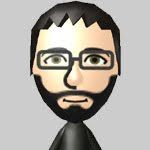


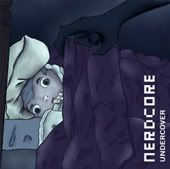
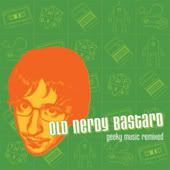
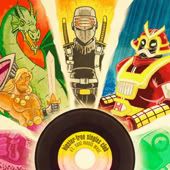
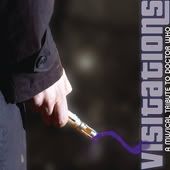
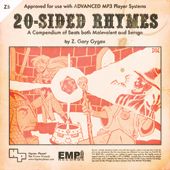
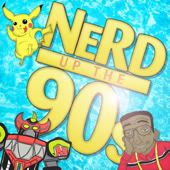







2 comments:
Agreed on all counts. If I miss Nerdpalooza 20XX, it is because someone died or I'm in the hospital.
Solution to the stages might be 3 stages in 3 rooms, only allowing people into one of the rooms at a time. Show one act at a time, 3 stages just gives more time to setup. Maybe 2 big stages and 1 small or vice-versa. Might be cost prohibitive, and might lead to people making lines at the door, but you can do the same thing with 2 stages in 2 rooms, like with the restaurant in 2008. Only it's better to have them joining with a hallway rather than, well, a doorway. Maybe if you got another ballroom, split them both in half, and used the fourth half for merch?
Or move it to Nashville. :)
My idea, Data, was two divided rooms and a third merch/chill spot. Imagine if Nerdapalooza 2010's setup was that original convention hall with a wall splitting it in-two, with the merch outside where the bathrooms and mobile bar were setup.
Again, this all sounds great on paper, but finding such a theoretical venue will surely be a hassle.
Post a Comment